Belçika’daki dostum Sıla, zaman zaman yazılarıyla blogumu şereflendiriyor. İşte kendisinden ünlü bir mimar ve eserlerine dair bilgi verici bir yazı daha =) İyi okumalar,
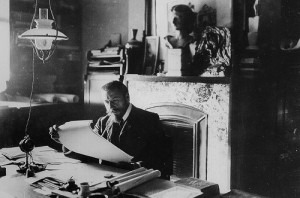
Victor, Horta (6 Ocak 1861 – 9 Eylül 1947), Belçikalı mimar ve tasarımcı. John Julius Norwich’ın tarifi ile “şüphesiz en önemli Avrupa Art Nouveau mimarı” decoratif sanatlar mimari tarzi tanitmak için akla gelen ilk isimdir. İlk büyük tasarimi Bruksel’de inşa edilen Hotel Tassel ‘dir(1892-3). Horta, tarihsel stiller reddeden ve yeni malzemeler kucaklayan, modern mimarinin temellerini atmiştir.
1932 yılında Belçika Kralı 1.Albert mimariye yaptığı hizmetlerden dolayı Victor Horta’ya Baron ünvanı vermiştir.
Victor Horta (6 January 1861 – 9 September 1947) was a Belgian architect and designer. John Julius Norwich described him as “undoubtedly the key European Art Nouveau architect.” Indeed, Horta is one of the most important names in Art Nouveau architecture; the construction of his Hôtel Tassel in Brussels in 1892-3 means that he is sometimes credited as the first to introduce the style to architecture from the decorative arts. The French architect Hector Guimard was deeply influenced by Horta and further spread the “whiplash” style in France and abroad. In rejecting historical styles and embracing new materials, Horta laid the foundations for modern architecture.
In 1932 King Albert I of Belgium conferred on Horta the title of Baron for his services to architecture. Four of the buildings he designed have been designated a UNESCO World Heritage Site.
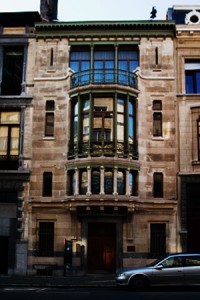
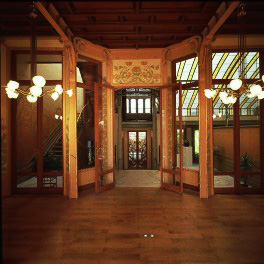
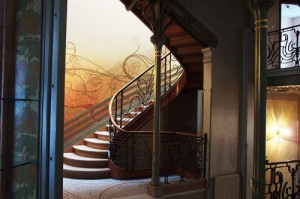
1892 yılında düzenlenen bir sergi ile Art Nouveau tanıtıldıktan sonra Profesörü Emile Tassel için bir konut tasarımı için görevlendirildi. 1893 yılında tamamlanan Hôtel Tassel 19. yüzyilda yeni bir çığır açan yarı açık plan düzeni ve daha sonra “biomorphic whiplash” olarak tanımlanan eğrisel botanik formları, anonim iç demir yapısı ile çarpici bir yapıydı.
Süslü ve özenli tasarımları ve doğal aydinlatma sağlayan elemanları , komşu binalarla uyumu sağlamak için taş cephe arkasına gizleme yaklaşimi binaya, döneminde büyük önem kazandirmiştir. Birçok Art Nouveau kitabina kapak olan ünlü merdiven tasarimi ise bu taş cephedeki girişin sol çaprazinda bulunmaktadir. Victor Horta’nin bu tasarimi Art Nouveau mimarisinin ilk kez ortaya çıkması olarak kabul edilmektedir.
After introducing Art Nouveau in an exhibition held in 1892, Horta was inspired. Commissioned to design a home for professor Emile Tassel, he transfused the recent influences into Hôtel Tassel, completed in 1893. The design had a groundbreaking semi open-plan floor layout for a house of the time, and incorporated interior iron structure with curvilinear botanical forms, later described as ?biomorphic whiplash?.
Ornate and elaborate designs and natural lighting were concealed behind a stone façade to harmonize the building with the more rigid houses next door. The building has since been recognised as the first appearance of Art Nouveau in architecture.
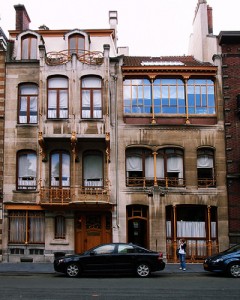
House and Studio of Victor Horta

Hotal Savoy
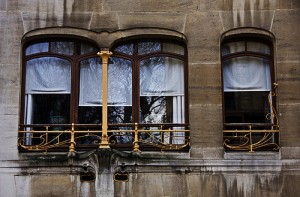
House and Studio of Victor Horta
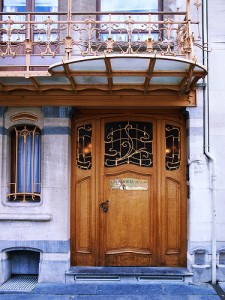
House and Studio of Victor Horta
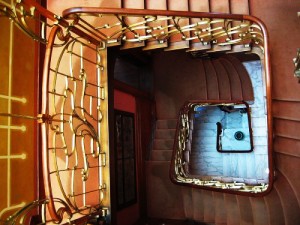
House and Studio of Victor Horta
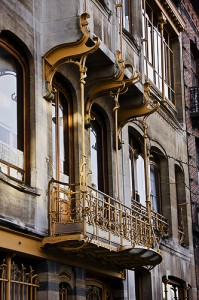
House and Studio of Victor Horta
Tasarımları büyük beğeni aldıktan sonra Horta, Brüksel’de birçok önemli binayı tamamlamak için görevlendirilmiştir. Bu yeni mimari tarzı geliştirmeye Horta Hôtel Solvay (1895-1900) ve daha sonra demirin ayrintili olarak iç mekanda ve diş cephede kullanılarak taş cephe ile birleştirildiği kendi konut /studiosunu tasarlayarak devam etmiştir (1898). Victor Horta’nin kendi için tasarladigi evi günümüzde Victor Horta Müzesi olarak hizmet ermektedir. Brüksel’ in Saint-Gilles mahallesinde Rue Américaine 25 numarada bulunan müze Art Nouveau stilinde küçük fakat çok etkili bir seyahat mekanidir.
After receiving great acclaim for his designs, Horta was commissioned to complete many other important buildings throughout Brussels. Enhancing this new architectural style, Horta designed the Hôtel Solvay (1895?1900) and his own residence (1898) employing iron and stone façade with elaborate iron interiors.
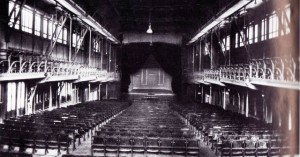
Maison du Peuple
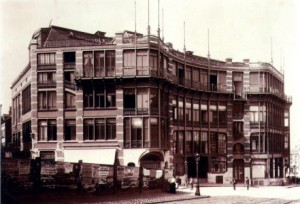
Maison du Peuple
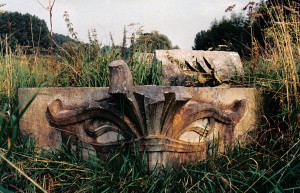
Maison du Peuple
1895 yılından 1899 yılına Horta, Ilerici Belçika işçi partisi için toplantı odası, kafeterya, 2000 kişilik konferans ve konser salonu ve ofislerden oluşan büyük bir Halk Evi (Maison du Peuple) tasarladi.1965 yılında 700’ün üzerinde uluslararası mimarin protestosuna rağmen gerçekleştirilen yikim karari, yirminci yüzyılın en büyük mimari suçlarından biri olarak anılmaktadır.
From 1895 to 1899 Horta designed the Maison du Peuple (House of the People), a major building for the progressive Belgian Workers’ Party consisting of a large complex of offices, meeting rooms, cafe and a conference & concert hall seating over 2,000 people. Its demolition in 1965, in spite of an international protest by over 700 architects, has been described as one of the greatest architectural crimes of the twentieth century.
Art Nouveau cazibesini kaybettikten sonra, 1965 yılında yikilan Maison du Peuple binasi gibi birçok Horta binası tahrip edildi. Ayakta kalmayi başarabilen Horta binalari bugun Brüksel’de ziyaretçilere açiktir.
After Art Nouveau lost favor, many of Horta’s buildings were destroyed, most notably the Maison du Peuple, demolished in 1965, as mentioned above. However, several of Horta?s buildings are stil standing in Brussels to today and available to tour. Most notable are the Magasins Waucquez, formerly a department store, now the Brussels Comic Book Museum and four of his private houses (hôtels), which were designated as a UNESCO World Heritage Site:
Bu binalardan en önemlileri:
- Magasins Waucquez Brüksel Çizgi Roman Müzesi (UNESCO dünya mirasi)
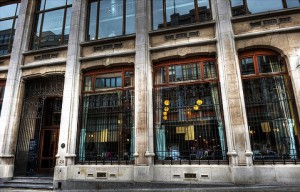
Les Anciens Magasins Waucquez
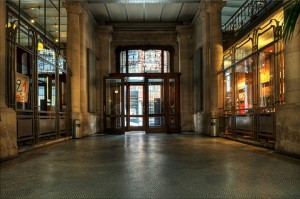
Les Anciens Magasins Waucquez
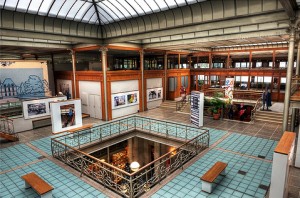
Les Anciens Magasins Waucquez
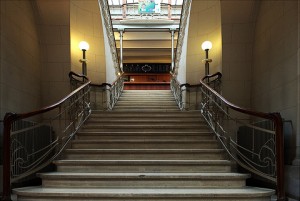
Les Anciens Magasins Waucquez
- Hôtel Tassel, 1892 yılında Prof Émile Tassel için tasarlanmış ve inşa edilmiş – 1893. Hôtel Tassel, designed and built for Prof. Émile Tassel in 1892 – 1893.
- Hôtel Solvay, tasarlanmış ve inşa edilmiş 1895 – 1900. Hôtel Solvay, designed and built 1895 – 1900.
- Hôtel van Eetvelde, tasarlanmış ve inşa edilmiş 1895 – 1898. Hôtel van Eetvelde, designed and built 1895 – 1898.
- Maison and Atelier Horta yılında tasarlanmış ve inşa edilmiş 1898 Maison and Atelier Horta, designed in 1898, now the Horta Museum, dedicated to his work.
Victor Horta’nin eserlerinin tam listesi/ Complited List of works ;
- 1885 : 3 houses, Ghent
- 1889 : Temple of Human Passions, Brussels
- 1890 : Maison Matyn, Brussels
- 1890 : Renovations and interior decoration to the Brussels residence of Henri van Cutsem, Brussels
- 1892-1893 : Hôtel Tassel, Brussels
- 1893 : Maison Autrique, Brussels
- 1894 : Hôtel Winssinger, Brussels
- 1894 : Hôtel Frison, Brussels
- 1894 : Atelier for Godefroid Devreese, Brussels
- 1894 : Hôtel Solvay, Brussels.
- 1895 : Interior decoration of the house of Anna Boch, Brussels
- 1895-1898 : Hôtel van Eetvelde, Brussels
- 1896-1898 : Maison du Peuple ,Brussels (demolished in 1965)
- 1897-1899 : Kindergarten, Brussels
- 1898-1900 : House and Studio of Victor Horta, Brussels (today the Horta Museum ).
- 1899 : Maison Frison “Les Épinglettes”,Uccle
- 1899 : Hôtel Aubecq, Brussels (demolished in 1950)
- 1899-1903: Villa Carpentier (Les Platanes), Ronse
- 1900 : Extension of the Maison Furnémont, Uccle
- 1900 : Department store: A l’Innovation,Brussels (destroyed by fire in 1967)
- 1901 : House and Studio for the sculptor Fernant Dubois, in Forest
- 1901 : House and Studio for the sculptor Pieter-Jan Braecke, Brussels
- 1902 : Hôtel Max Hallet, Brussels.
- 1903 : Funeral monument for the composer Johannes Brahms on the “Zentralfriedhof” in Vienna (in collaboration with the Austrian sculptor Ilse Conrat)
- 1903 : Magasins Waucquez, Brussels (today Belgian Centre for Comic Strip Art)
- 1903 : House for the art critic Sander Pierron, Brussels
- 1903 : Grand Bazar Anspach, Brussels (demolished)
- 1903 : Maison Emile Vinck, Brussels
- 1903 : Department store, Brussels (converted)
- 1904 : Gym for the boarding school “Les Peupliers” in Vilvoorde.
- 1905 : Villa Fernand Dubois, Sosoye.
- 1906 : Brugmann Hospital, Place A. Van Gehuchtenplein in Jette; (First design; opened in 1923)
- 1907 : Magasins Hicklet, Brussels (converted)
- 1909 : Wolfers Jewellers Shop, Brussels.
- 1910 : House for dr. Terwagne, Antwerp.
- 1911 : Magasins Absalon, Brussels
- 1911 : Maison Wiener (demolished)
- 1912 : Brussels-Central railway station (first designs; completed by Maxime Brunfaut and inaugurated in 1952).
- 1920 : Centre for Fine Arts, rue Ravensteinstraat in Brussels (first design; opened in 1928).
- 1925 : Belgian pavilion at the Exposition Internationale des Arts Décoratifs et Industriels Modernes Paris
- 1928 : Musée des Beaux-Arts Tournai in Tournai.1903 : Magasins Waucquez, Brussels (since 1989 Belgian Centre for Comic Strip Art)
- Yazan: Sıla Giriftinoğlu (twitter.com/silagr)
- Editör: Zeynep Yılmaz


proje çalışmam için almam gerekiyor Nişantaşı üniversitesi sanat ve tasarım fakültesi tekstil ve moda tasarımı 1 sınıf öğrencisiyim lütfen bu yazıyı nasıl alabilirim acillllll !!!!!!!ACİL ACİL ACİL
E-mail ile tarafınıza gönderilmiştir.
bende proje calısmam ıcın alabılır mıyım . yardımcı olur musunuz
mail adresinize ilettim.
iç mimarlık 3. sınıf öğrencisiyim, yazıya erişmek istiyorum
Ben de proje çalışmam için alabilir miyim
Tabi ki.